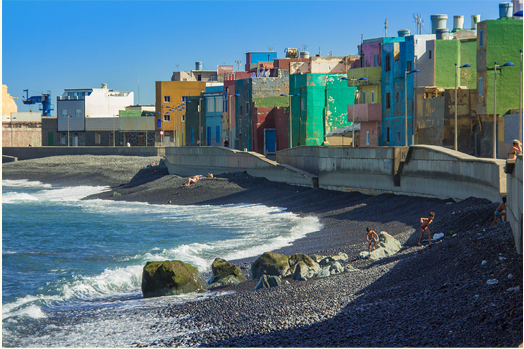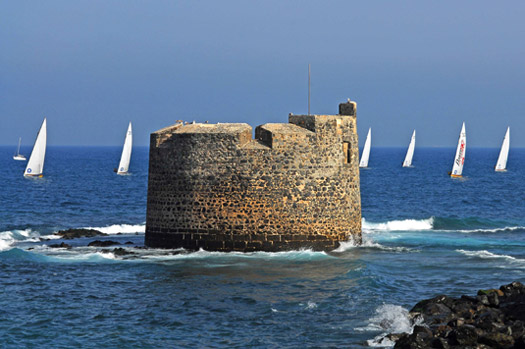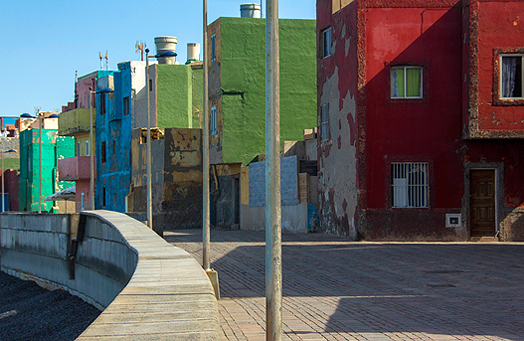
If a Canary person were blindfolded and taken to the fishing neighbourhood of San Cristóbal, he would soon guess where he was. The aroma of fresh fish, the characteristic feature of this place, is mixed with the hollow sound of pebbles clunking against each other as they are dragged along by the tide.
Although it actually makes no difference if the visitor is a traveler or a local. This secluded spot can provide lasting memories, despite our everyday habits getting in the way, which sometimes stop us from savouring the real thing. But if we keep our 5 senses on alert, we will soon spot the San Pedro Fortress, right on the sea edge, sitting on a natural rocky formation. The fortress adorns the coastline, and the horizon, or both at the same time, depending on where we view it from.

The fishing district is made up of a nucleus of houses of similar design, just a few metres back from the sea. It has a promenade, a port that dates from 1980, and friendly locals. This is the district of San Cristóbal, which is now over 150 years old. Peace and quiet is the order of the day, while the sea breeze wafts past. Our day is rounded off by a superb evening meal at one of several restaurants located in this quite peculiar neighbourhood.
The fishermen who are still there, who know this stretch of coast better than any, always hark back to previous times when talking about this place. They are the ones who it is generally easier to strike up a conversation with. They remember when the Chinchorro was used, a traditional drag-fishing technique which was prohibited. They also celebrate the “corn algae”, referred to by scientists as Sargassum vulgare, which abounded along this stretch of coastline and at Las Canteras. They say it could be eaten, just like the white crab and mussels which could be picked from the rocks which are sadly today nearly deserted, and which used to go into paella dishes which have never tasted the same since.
The neighbours tell of how the seagulls used to form clouds above the boats that came in cleaning the fish, announcing that the catch had been a good one. By the size of the cloud of seagulls flying overhead, you could tell how good the catch had been.

Today’s picture is a different one. Although it is still a wonderful place, the fishermen tell of how it stopped being the spot it used to be for marine species and for its inhabitants. Going down barefoot to pick up a few limpets and whelks is not comparable to fishing out to sea, which is currently the norm.
Nevertheless, the local fishermen still supply the finest fishmongers all over the island. And their simple, bright traditional fishing vessels continue to add a splash of colour to a place which has always been a strategic enclave for the city. Years ago it was the island’s first line of defence, as displayed by the Tower of San Pedro, declared an artistic historic monument in 1922, popularly known as the Castillo de San Cristóbal.
San Cristóbal continued to be a reference point in the city, for its fishing, and today it still stands out as a simple and traditional picture postcard district, and of course, for its people.
The neighbourhood preserves an aura of yesteryear, with its snug setting, jutting out along the coastline of Las Palmas de Gran Canaria, somewhat isolated from the city, and without really trying to, attracting many a visitor into its own little universe. It is a place with no frontiers, a place to stop to breathe in the sea air, or to come and enjoy a simple sunrise.
At Las Palmas de Gran Canaria going southbound along the GC-1 motorway, we turn off at San José and come back on ourselves to take the little turning off to our right, right behind the houses that make up the fishing neighbourhood of San Cristóbal. If we are driving into Las Palmas de Gran Canaria from the south, we take the same turning off, obviously without having to turn around first.
A good way of coming in from other points of the capital is by bike. A bike lane goes right along the promenade and provides a memorable ride.